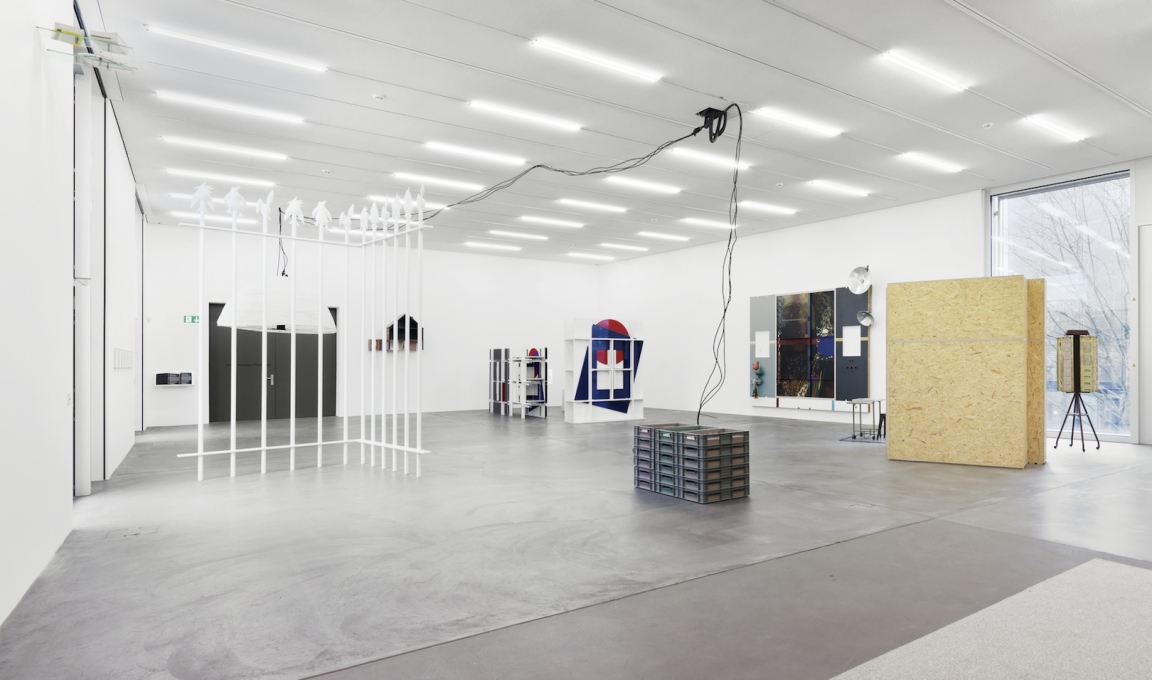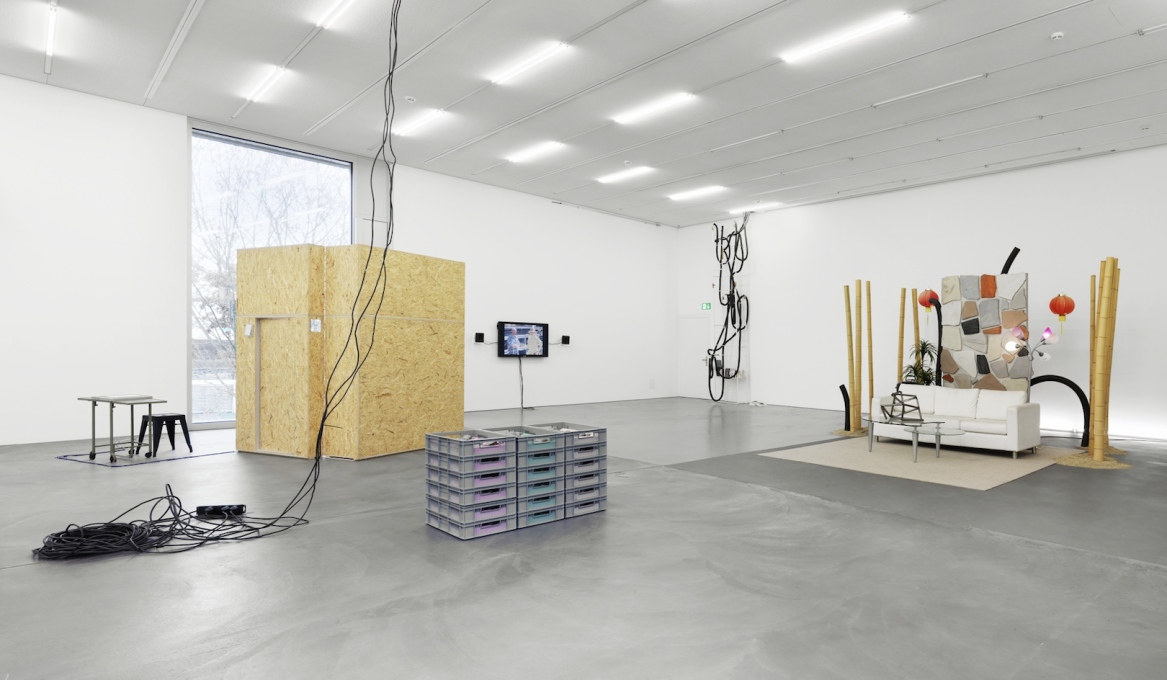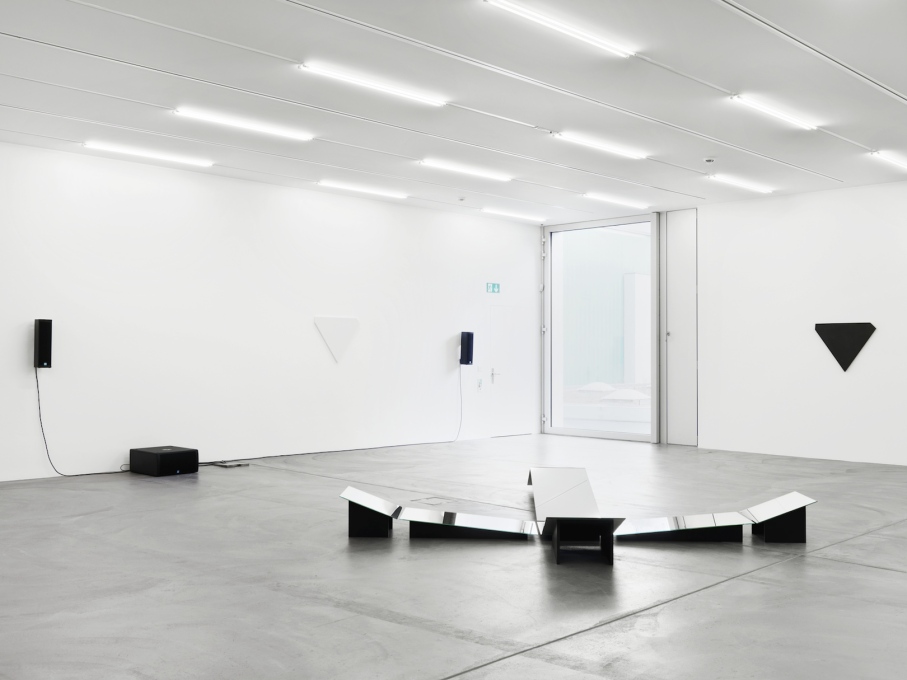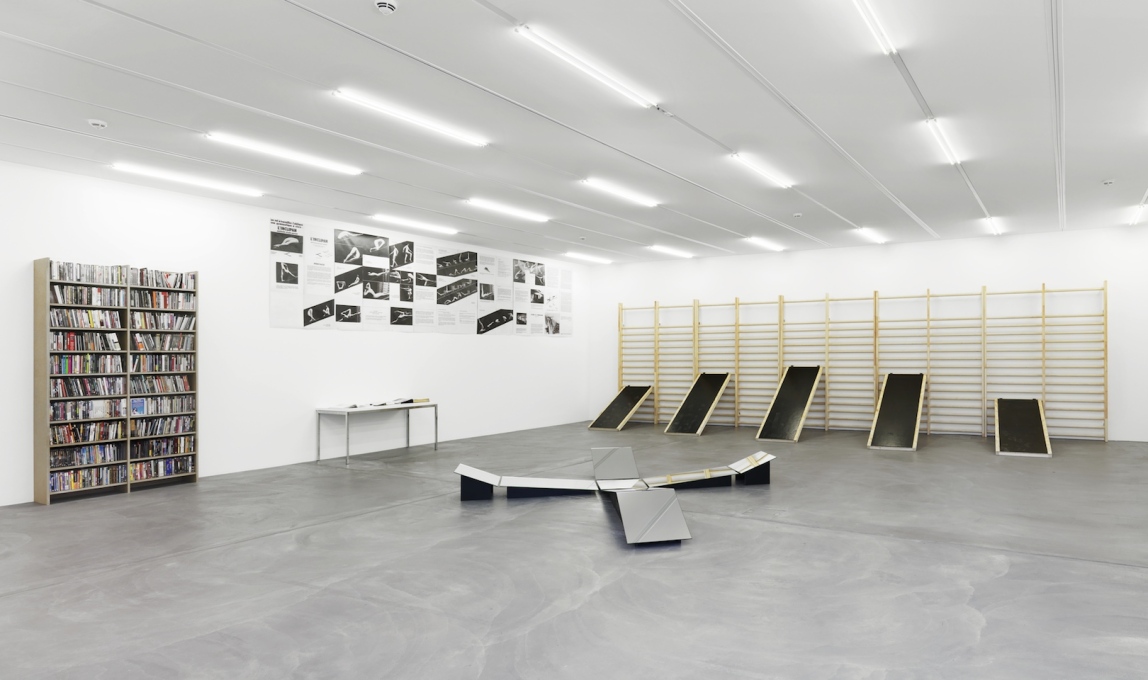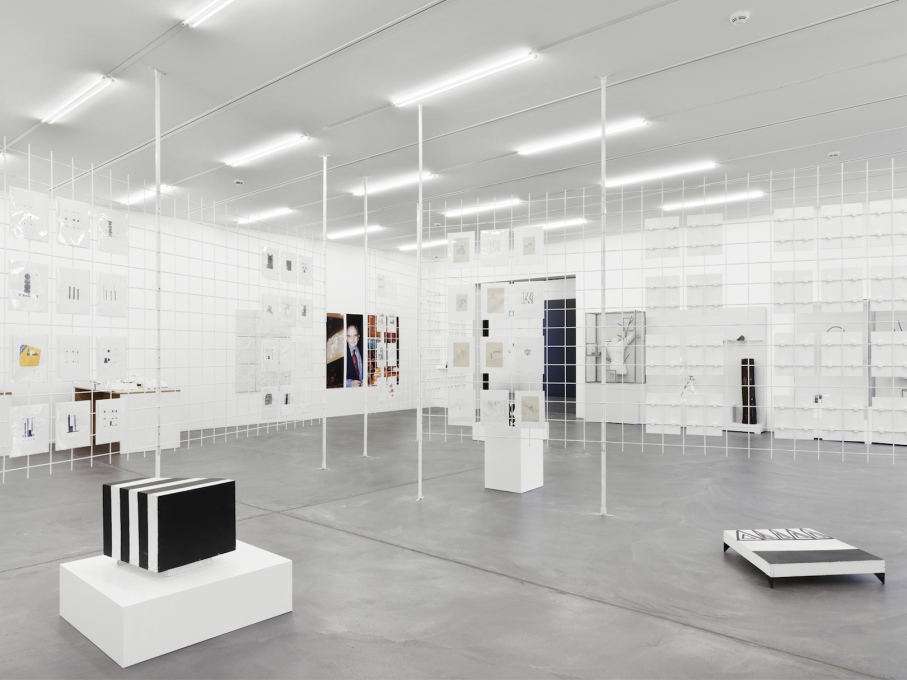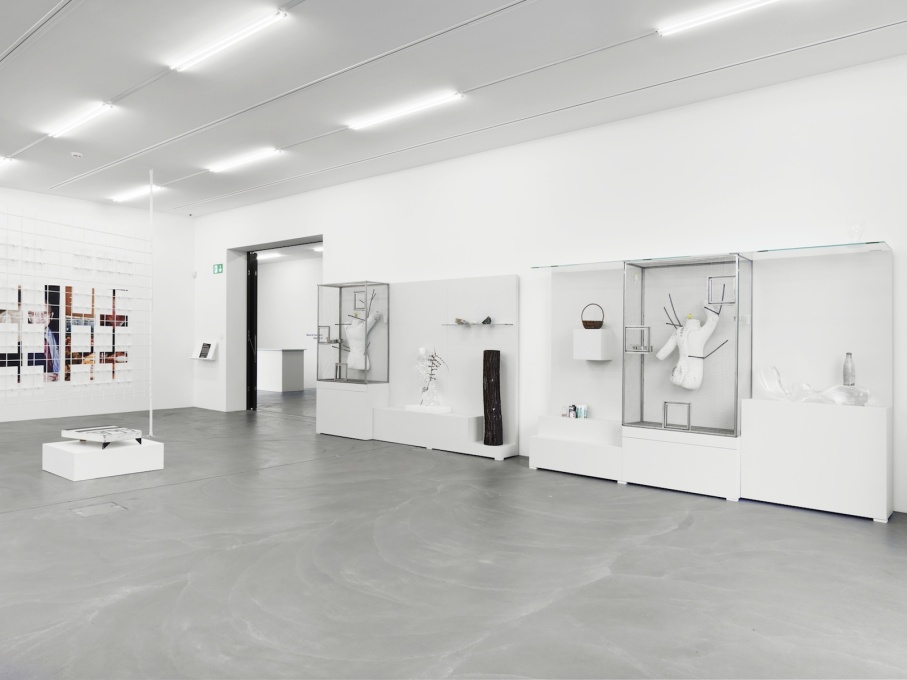A new exhibition in Zurich confronts “the impossibility of exhibiting architecture” by neatly side-stepping the issue through casting itself as a space of theatre, freeing itself from the direct need to represent or mimic architecture and design, whilst being able to comment on the problematics of doing so by creating a zone between fiction and reality. Aoife Rosenmeyer visited for uncube and assessed the exhibition’s success.
Amongst the current activities of the LUMA Foundation, founded by pharmaceutical heiress Maja Hoffmann, are occasional events at the foundation’s Zurich exhibition space, such as the current show that curators Fredi Fischli and Niels Olsen have produced as part of their remit as Co-Directors of gta exhibitions within the Institute for the History and Theory of Architecture at Zurich’s ETH university. Theater Objects: A Stage for Architecture and Art is set to be the first of a series of exhibitions in various venues in the city that combine contemporary art and architecture; this first iteration includes 24 artists, architects or architectural practices.
The exhibition opens with an admission of failure: the introductory text baldly states “the impossibility of exhibiting architecture” while noting the recent popularity of attempts at doing this. The strategy the curators employ to overcome this conundrum is to explore the idea of the stage as a liminal zone where reality and fiction meet. The show is divided over two galleries on two floors, and the first, lower level has much in common with a prop warehouse. Sculptural constructions are assembled in an open-plan arrangement that the viewer has to pick their way through. Among these are Pieter De Bruyne’s Day and Night (1983) cupboard, which ably holds its own in such chaotic circumstances, making a strong statement beside model Ode PDB (Pieter De Bruyne) (2013), a chipboard shelving structure from architecten de vylder vinck taillieu that references De Bruyne’s cupboard but cannot escape the provisional status its material implies.
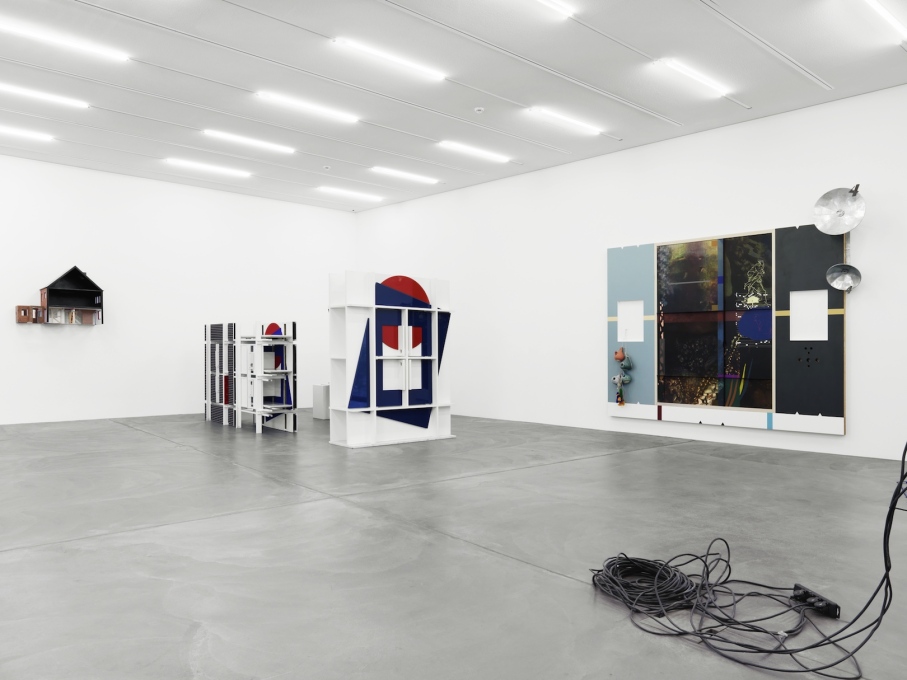
Another work by de vylder vinck taillieu House Ganzendries (2014), a model displayed high on the wall, also references De Bruyne’s piece, but in a more resolved fashion. Its position like a dollhouse above the heads, let alone eye-level, of most visitors seems intended to thwart viewing, and is in keeping with a generally un-spectacular or even anti-spectacular approach to installation in the show. Dan Graham’s contribution, for instance, is not the pavilion one might expect, but rather a brief slide show and textual list of Artist’s and Architect’s Works That Influenced Me (2009), which include Itsuko Hasegawa’s Shonandai Cultural Centre (1990) and Claes Oldenburg’s War Memorial (1965). There is also nowhere to sit to watch Uri Aran’s Documentation, Circle Relieve (2012/2014) so few will see the full film, commissioned by the LUMA Foundation, which was shot inside the Roman arena at Arles: a piece which, with a mixture of ex-diegetic and diegetic sound, gives the impression of the preparation for rather than the presentation of a fully realised narrative. The one clear exception to this in the first gallery is William Leavitt’s Superbot Set (2014), a domestic setting that occupies nearly a quarter of the space: with a sofa, wall, lighting, ornamental bamboo and potted plants recreating a midcentury LA interior. In comparison with the various works resembling kits, models and cases exhibited around it, Leavitt’s work makes the most direct impression, as if its hyper-real, camera-ready state is what is necessary to transcend the workshop-like context.
One floor above, the curators could not resist more formal resonances between works: the birds inside Andrea Branzi’s Voliera Pergamo 1 and 2 (both 2013), which are two shelving structures incorporating aviaries, look out of their caged confines at a similar, freestanding grille which holds a series of drawings by Peter Märkli. In the adjoining space Claude Parent’s DANSE ET ARCHITECTURE is a gymnastic installation produced by the architect with his daughter Nicole Parent, who proposed a choreography to be performed using the structure as illustrated in photographs on the wall; their slanting platforms echo Trix and Robert Haussmann’s Liegende Figur, homage à Bracelli (2014), an installation of flat and tilted mirrors in the centre of the space.
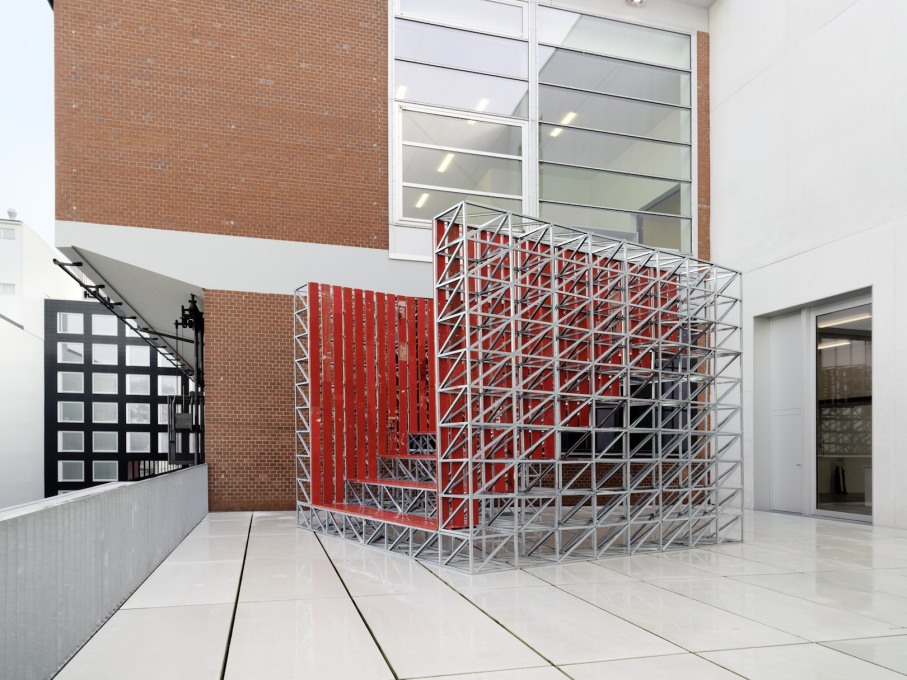
The exhibition title is borrowed from William Leavitt’s 2011 retrospective at the Museum of Contemporary Art in Los Angeles, and of those artists included, Leavitt is the only one who clearly exploits theatrical devices and dramatic possibilities. Between the two exhibition spaces, Studio Tom Emerson’s Fun Palace (2014), a raked tribune made from a modular metal frame and red wooden slats, sits on the Löwenbräuareal building’s upper terrace. Created with ETH architecture students, this seating focuses attention towards the view from the art centre over the buildings around. The gallery’s surroundings become a scene to be observed, a site where drama might unfold. Otherwise, the artists and architects shown are experimenting, archiving, documenting, comparing, observing and remarking. Perhaps the exhibition title is a red herring, and one should not pay it too much attention, but in its terms, it is the architects that win this face-off between two disciplines. Artists are entitled to adopt the appearance of architectural investigation, but as this exhibition demonstrates, their works are in danger of looking like poor imitations when shown alongside vital “real” architecture like Pieter De Bruyne’s cupboard, Emerson’s bleachers or Parent’s gym.
– Aoife Rosenmeyer is a critic and translator based in Zurich. In 2008 she founded the itinerant debate series art+argument. @artandargument
Theater Objects: A Stage for Architecture and Art
LUMA Westbau
Löwenbräukunst
Limmatstrasse 270
8005 Zurich
Switzerland
Featuring works by: Uri Aran, 6a architects, architecten de vylder vinck taillieu, Andrea Branzi, Pieter De Bruyne, Studio Tom Emerson, Dan Graham, GRUPPE, Trix & Robert Haussmann, Christian Kerez, William Leavitt, Made In, Peter Märkli, Helen Marten, Josep Lluís Mateo, Mélanie Matranga, Matthias Megyeri, Claude Parent, Magali Reus, Carissa Rodriguez, Cameron Rowland, Stephan Trüby, Günther Vogt, Peter Wächtler and Richard Wentworth.




